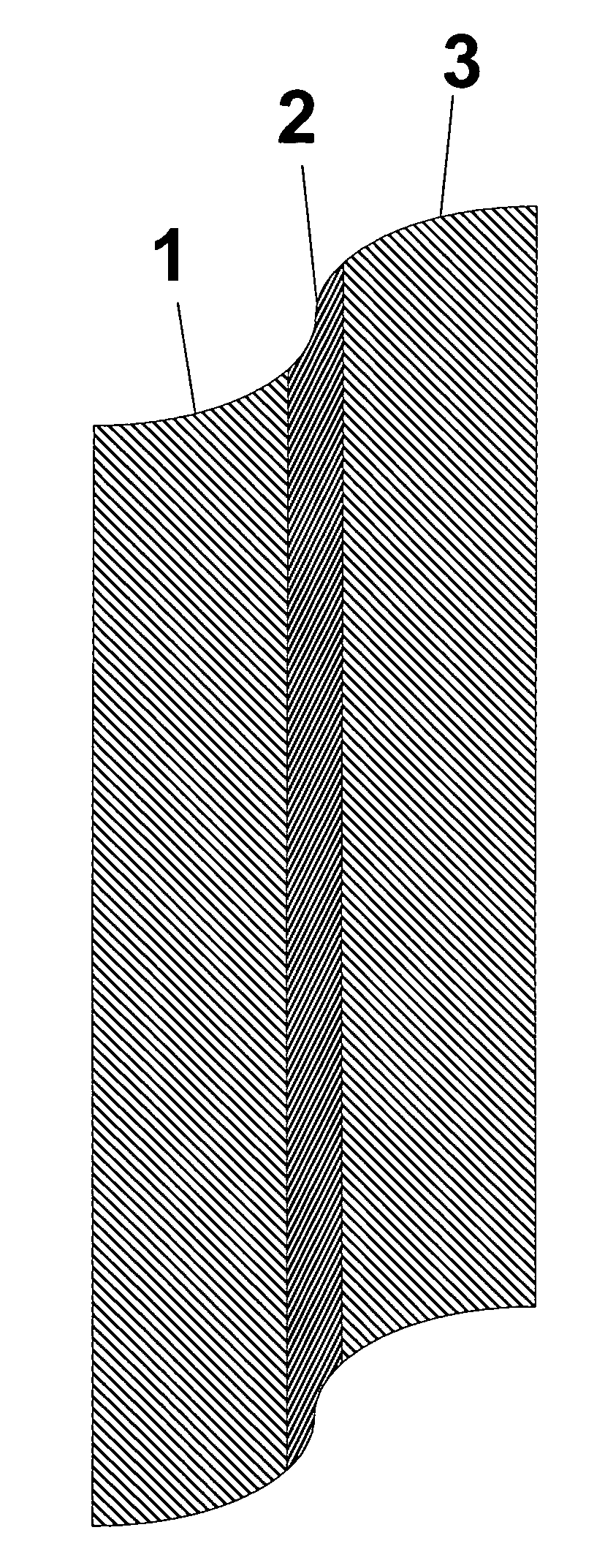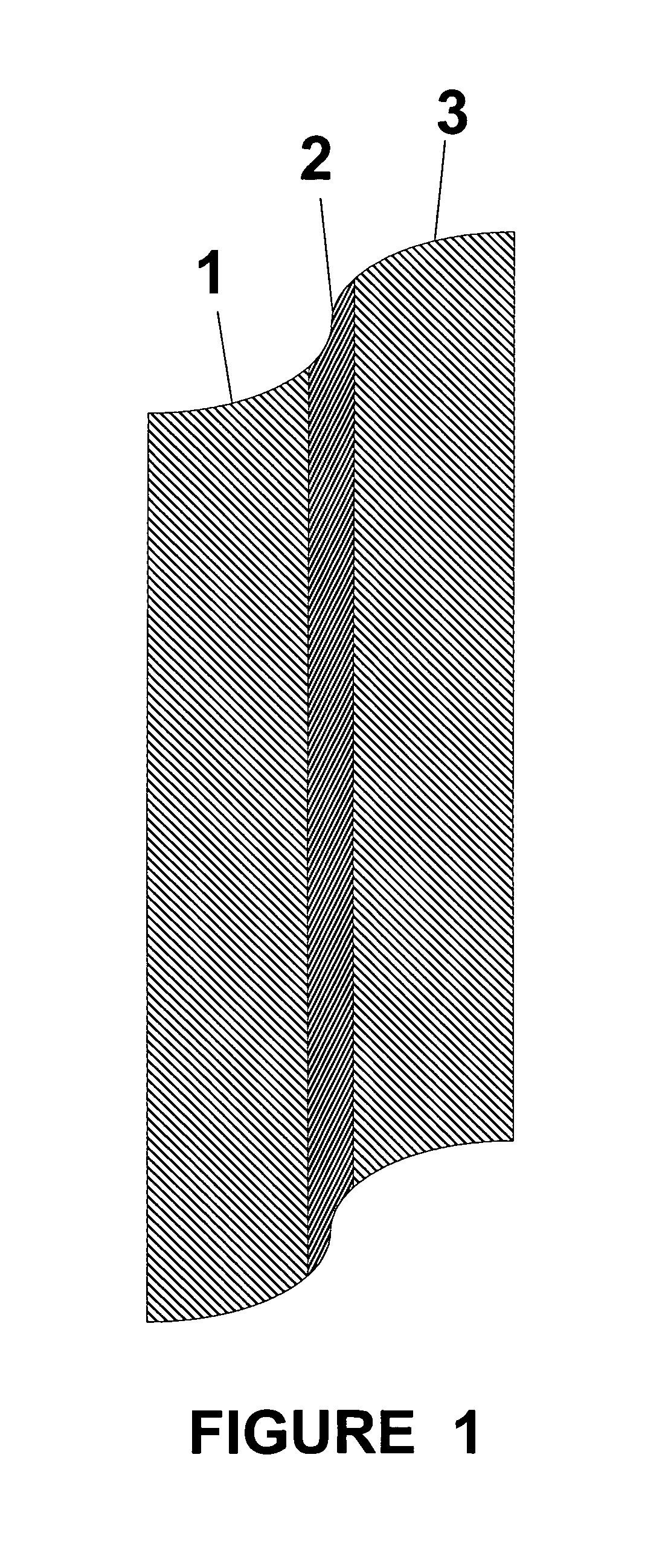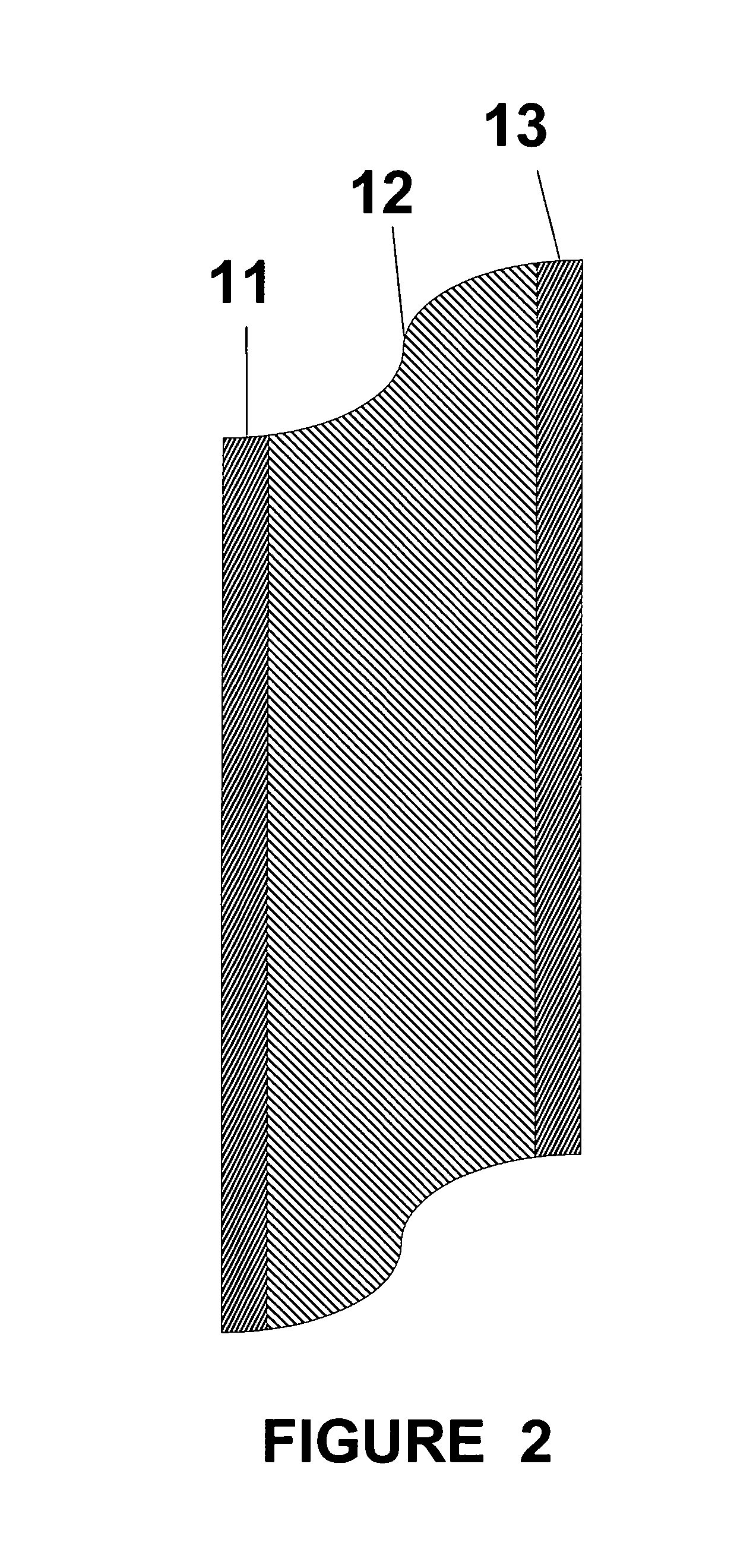Thin film composite electrolyte
a composite electrolyte and thin film technology, applied in the direction of non-aqueous electrolyte cells, ceramics, cell components, etc., can solve the problems of low ion flux, unsupported electrolyte tubes of the prior art can typically not be optimized for high flux, and cell made by conventional methods, etc., to achieve excellent bonding between the two layers
- Summary
- Abstract
- Description
- Claims
- Application Information
AI Technical Summary
Benefits of technology
Problems solved by technology
Method used
Image
Examples
example 3
ATION, DENSE LAYER
[0051]Into a small (˜1 pt) mill jar was added ˜215 g ¼″ YSZ cylindrical grinding media. To that was added 0.87 g menhaden fish oil (dispersant), 33.41 g mixed xylenes, 33.42 g anhydrous ethanol and 43.40 g hot (about 120° C.) (β″-Al2O3 from Example 1). The mill jar was sealed and the mixture milled on a roll mill at 60 rpm for 24 hours. To this was then added 3.48 g polyvinylbutyral (binder) and 1.75 g butyl benzyl phthalate (plasticizer). The mixture was further milled at 60 rpm for 24 hours. The slip was then strained to remove grinding media and de-aired under a slight vacuum (˜680 torr) to remove entrained air bubbles. This slip was designated SLIP-026.
example 4
ATION, DENSE LAYER
[0052]SLIP-026 from Example 3 was used to cast tapes of different thickness. Tapes of 2 mils, 3 mils and 4 mils were cast onto silicone coated Mylar using a 10″ Gardner BYK casting knife with an adjustable gap. Tapes were dried on a heated plate at 40° C. and stored in an evacuated container to minimize moisture uptake.
example 5
ATION, MICROPOROUS LAYER
[0053]Into a small beaker was placed 4.5 g attrition milled rice hulls (−325 mesh), 13.50 g unmilled rice hulls (−325 mesh) and 42.00 g β″-Al2O3 (RCS-022 from Example 2). The powders had been previously dried in an oven at 110° C. for 24 hours to remove moisture. The powders were mixed with a spatula until visually homogeneous and added to a small mill jar containing ˜215 g ¼″ YSZ cylindrical milling media. To this was added 1.20 g menhaden fish oil dissolved in 26.40 g mixed xylenes and 26.40 g anhydrous ethanol. The mill jar was sealed, shaken vigorously to mix the components and milled on a roll mill at 60 rpm for 24 hours. To this jar was then added 4.81 g polyvinyl butyral, 3.60 g butyl benzyl phthalate and 3.63 g polyalkylene glycols (plasticizer). The contents were milled for another 24 hours at 60 rpm on a roll mill. The grinding media were strained out and the slip was deaired under a slight vacuum. This slip was designated SLIP-029.
PUM
| Property | Measurement | Unit |
|---|---|---|
| temperature | aaaaa | aaaaa |
| temperature | aaaaa | aaaaa |
| temperature | aaaaa | aaaaa |
Abstract
Description
Claims
Application Information
 Login to View More
Login to View More - R&D
- Intellectual Property
- Life Sciences
- Materials
- Tech Scout
- Unparalleled Data Quality
- Higher Quality Content
- 60% Fewer Hallucinations
Browse by: Latest US Patents, China's latest patents, Technical Efficacy Thesaurus, Application Domain, Technology Topic, Popular Technical Reports.
© 2025 PatSnap. All rights reserved.Legal|Privacy policy|Modern Slavery Act Transparency Statement|Sitemap|About US| Contact US: help@patsnap.com



